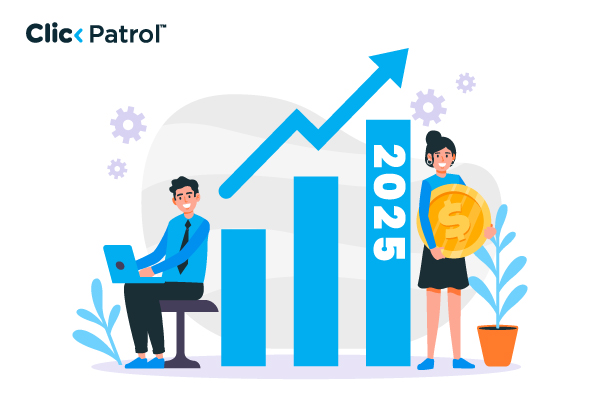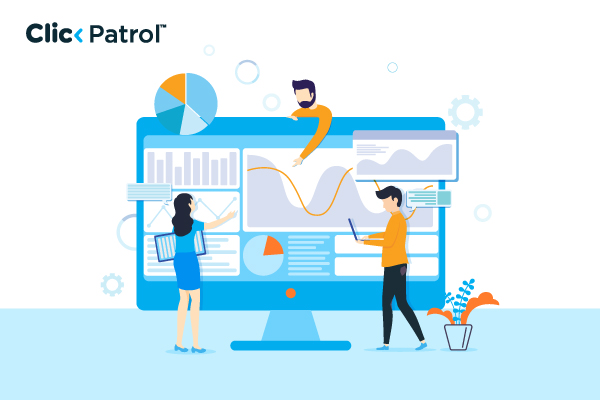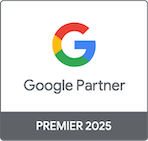Not completely; however, it lessens them by 20-40% when combined with exclusions.
The hidden cost of irrelevant ad traffic: 3 Real-world case studies
Abisola Tanzako | Nov 07, 2025

Table of Contents
- Why irrelevant ad traffic wastes your campaign budget
- Case Study 1: How ClickPatrol blocked irrelevant traffic to save 29% ad spend for various users
- Case Study 2: Giordano boosts engagement with ClickPatrol
- Case Study 3: How Avis cut irrelevant Ad traffic and increased conversion by 123%
- How ClickPatrol solves this: Best practices to avoid irrelevant ad traffic
- How to combat irrelevant ad traffic and protect your ad spend
Irrelevant ad traffic and bots drive traffic that is irrelevant or fraudulent, wasting budget and distorting performance metrics.
In 2023, about 22% of global digital ad spend, nearly $84 billion, was lost to fraud and irrelevant ad traffic. Many advertisers assume more traffic means more conversions, but this is costly and often false.
This article examines three real-world cases of irrelevant traffic, their actual costs, and how ClickPatrol helps target ads to high-quality, relevant sites.
Why irrelevant ad traffic wastes your campaign budget
It is useful to know why irrelevant traffic is so bad before getting into case studies:
- Wasted spend with no conversion potential: When you advertise to an audience with no interest in or fit for your product, you spend on impressions or clicks that will never turn into conversions.
- Data pollution and false metrics: Irrelevant traffic distorts metrics such as CTR, bounce rates, session lengths, or viewability, rendering the performance analysis unreliable.
- Reduction in quality score/Ad rank penalties: Most advertising platforms penalize low-engagement or high-bounce ads by increasing your cost per click or de-ranking your placements.
- Brand safety and reputation risk: Ads placed near illicit, sensational, or inappropriate content can damage a brand’s image.
- Opportunity cost: Any impression lost is an opportunity lost to a real, high-intent user.
Case Study 1: How ClickPatrol blocked irrelevant traffic to save 29% ad spend for various users
Many advertisers struggle with click fraud and irrelevant traffic, which can silently drain budgets and skew campaign performance metrics.
During ClickPatrol’s alpha testing phase, an analysis of 18,311 ad clicks revealed that 8% of clicks came from fraudulent or irrelevant sources.
By automatically blacklisting high-risk IPs and filtering low-quality traffic, advertisers saved an average of 29% on ad spend.
The result included reduced wasted impressions, more accurate campaign data, and higher-quality traffic, allowing marketing budgets to be allocated more efficiently and significantly improving ROI.
Case Study 2: Giordano boosts engagement with ClickPatrol
Giordano, a fashion retailer, faced major challenges with click fraud. Their online campaigns suffered from high bounce rates and low user engagement, making it difficult to convert visitors into customers.
By implementing ClickPatrol’s advanced anti-fraud solutions, Giordano protected its ads from bot traffic and invalid clicks.
The results were immediate and transformative. The time spent on the page increased by 58%, demonstrating that users were engaging more deeply with the brand’s content.
Bounce rates dropped significantly, resulting in higher conversion rates and improved sales. René de Boer from Giordano’s marketing team shared, “ClickPatrol helps us achieve better results for our clients.
By efficiently filtering out non-human traffic, we can ensure ad budgets are spent effectively and drive real engagement.
Case Study 3: How Avis cut irrelevant Ad traffic and increased conversion by 123%
Avis, a global car rental company, faced high costs from irrelevant and fake traffic in its paid search campaigns targeting South African customers.
Bot clicks and low-quality placements drove up costs, lowered CTR, and hurt conversions. Manual fixes, such as regional targeting and negative keywords, proved ineffective.
After implementing ClickPatrol, Avis gained real-time visibility into traffic quality through a clear dashboard that automatically blocked fake and irrelevant clicks. Results in three months:
- Conversions: +123%
- CTR: +91%
- CPA: -36%
Automating traffic screening allowed Avis to focus ad spend on legitimate, high-intent users, turning wasted impressions into measurable ROI. “ClickPatrol has become a part of my morning routine,” said Avis’ paid media consultant, highlighting its role in protecting ad budgets.
How ClickPatrol solves this: Best practices to avoid irrelevant ad traffic
To protect your ad spend and improve campaign performance, follow these ClickPatrol best practices to filter out irrelevant or fraudulent traffic:
- Begin with whitelisting or strong site controls: Accept only trusted publishers. Use from-scratch whitelists or positive lists to prevent surprises.
- Use placement reports frequently: Monitor where your ads run and identify outliers, such as domains with unusually low CTR, engagement, or conversions.
- Eliminate high-risk categories/verticals: Avoid tabloid, gossip, clickbait, low editorial content, or pop-up-heavy sites.
- Establish minimum performance floors: Set thresholds for time on site, scroll depth, or dwell time, and filter out placements that fall below them.
- Apply third-party verification and brand safety tools: Tools like IAS, DV, and Moat help detect unsafe placements, though many work post-factum rather than in real-time.
- Check IP / network clustering: Watch for suspicious traffic from data centre IPs, repeated clicks from the same subnets, or very brief sessions.
- Use conversion-based attribution: base bidding and attribution on actual conversions rather than clicks to ensure budget efficiency.
- Manual control alone is costly and often inaccurate; ClickPatrol automates these measures for consistent, high-quality ad traffic.
How to combat irrelevant ad traffic and protect your ad spend
The most common, invisible, insidious, and costly leak in digital marketing campaigns is irrelevant ad traffic.
Regional brand examples and wide-scale display campaigns show that, without proper oversight, ad spend can be drained to fake subdomains, bot farms, or incorrect verticals. The consequences are significant: wasted spend, contaminated data, eroded optimization, and potential brand risk.
ClickPatrol’s approach, which includes placement exclusions, real-time quality scoring, and dynamic reallocation, is not just a strategy but a must-have for advertisers serious about protecting their budgets.
To safeguard campaigns from irrelevant traffic and prevent placement leakage while accessing cleaner, more effective ROAS, complete this form to request a ClickPatrol demo.
Frequently Asked Questions
-
Can audience targeting get rid of bad placements?
-
How does ClickPatrol fit into my current setup?
Conveniently, through API or direct connection with Google Ads. It removes bad placements in real time, which supports your audience targeting.
-
How do ad blockers affect my campaigns?
Ad blockers reached 912 million users in 2023 by preventing intrusive ads, resulting in a $47 billion revenue loss. Targeting placement reduces this risk by eliminating irrelevant or intrusive placements.






